This post may contain affiliate links. If you make a purchase through a link, I may receive a small commission, at no cost to you. These commissions help keep this website up and running, and I thank you for your support. Read my full disclosure here.
Disclaimer: This is not a sponsored post, I paid for this trip myself. All recommendations and opinions are my own.
The beautiful medieval village of Saint-Émilion sits on a hill overlooking vineyards that stretch as far as the eye can see. Located in the stunning region of Nouvelle-Aquitaine in south-western France, St-Émilion is a UNESCO World Heritage Site. Alongside its famous vineyards which the Romans started planting as early as the 2nd century, it features beautiful historic buildings, ruins, extensive caves that run under the village, and some rather charming narrow, and at times steep, cobbled alleyways.
We visited St-Émilion as part of our two week holiday in France which included Toulouse, Cacassonne, Arcachon, Bordeaux, and Bergerac. St-Émilion is an easy day trip from Bordeaux, however, if I ever get the opportunity to return to this wonderful place, I would love to spend a few nights so I can cycle through the countryside and enjoy the variety of wines. During our visit to St-Émilion, we focused on enjoying and exploring the history of the village rather than wine tasting, as we had already spent the day before on a wine tour of the Médoc region which you can read about here.
Despite what you may read, it is very easy to get yourself to St-Émilion without having to go on a tour or drive. We took the morning train from Bordeaux’s central train station, Gare St-Jean, which took about 35 minutes. There is a local train that runs between Bordeaux and St-Émilion, however, not all of them stop at St-Émilion station, so make sure you plan your trip in advance. You can also get the train to the nearby town of Libourne and get a bus to St-Émilion from there. During the summer months they also run a bus service a couple of times a day from Bordeaux.
You can purchase your train tickets from the station ticket office or ticket machines, or online using the Trainline website. The train station building in St-Émilion is permanently closed, so make sure you purchase your return ticket at Bordeaux. We didn’t know about this, but luckily I was able to purchase our return tickets on my phone whilst waiting for the return train.
From the St-Émilion train station it’s about a 20 minute walk up the hill into the village. However if you prefer, you can take the little road train that runs tourists from the train station up to the village, or take one of the local tuk tuk taxi’s. We chose to take the path that leads you up to the village. The road was very quiet, so it was a peaceful walk through the countryside. But be warned, it is absolutely covered in dog poop, so just be careful where you walk as it is easy to get distracted by the beautiful surroundings!
Once we got to the village, we headed up Place Bouqueyre which is lined with tourist stores selling everything from foie gras to their famous macarons. Be aware that this area of France is where they produce foie gras, so there are a number of shops selling and promoting these products which may be upsetting for some people. The macarons are nothing like the ones you see today, these are the original French macarons which are thin sweet almond wafers made by nuns in 17th century St-Émilion, and sold today in the local stores. You can still visit the remains of the nuns convent which I talk more about below.
The Wash Houses
As we walked up Place Bouqueyre and onto Rue de la Grande Fontaine we came upon our first historic site of the day, a wash house which was constructed in the 19th century. The women of the town came here to rinse their laundry which they had washed at home. Rinsing requires a lot of water, so they would gather at these wash houses to labour and share gossip. There are two wash houses in St-Émilion, the fountain of the King, named so because it sits at the foot of the Kings Keep (see more below), and the fountain of the Place. Grande Fontaine (Big Fountain) sits on the aptly named street of Rue de la Grande Fontaine and the Petite Fontaine (Small Fountain) is located on nearby Rue de la Petite Fontaine. This bigger one was covered for the use of women from wealthy houses, whereas the smaller one was uncovered for use by the lower class.

The King’s Keep
We continued up the stony path of Rue du Château du Roy which is overlooked by the Chateau du Roy, or the King’s Keep, a massive square tower from the 13th century. Apparently no one knows who ordered its construction and whether it was built for security purposes or as a symbol of power. For a small fee you can go inside and walk up the 118 steps to enjoy views of the area. When we arrived it wasn’t open yet (contact the local Tourist Office for hours if you want to visit as the times vary). We had planned to return later in the day, but ran out of time and went up the Bell Tower of the Monolithic Church instead (more on this below). There is a lovely viewing spot just up behind The King’s Keep on Rue du Couvent which offers stunning views over the village. It’s the perfect spot for a photo.
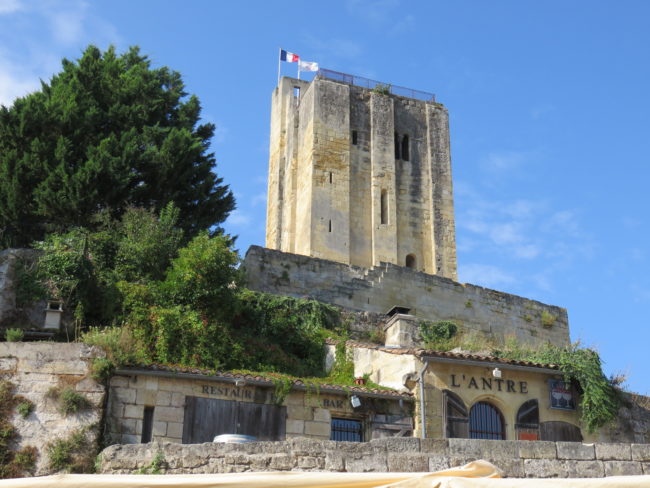
The Ursulines’ Convent
As we were standing at the viewing spot above The King’s Keep on Rue du Couvent, we looked behind us and discovered another historic site amongst the grapevines. It was a small part of the Ursulines’ convent which was founded in the 17th century by the Ursuline nuns. They were eventually expelled following the French Revolution in 1789. It is these nuns which created the little round almond cakes known as the ‘macaron’.
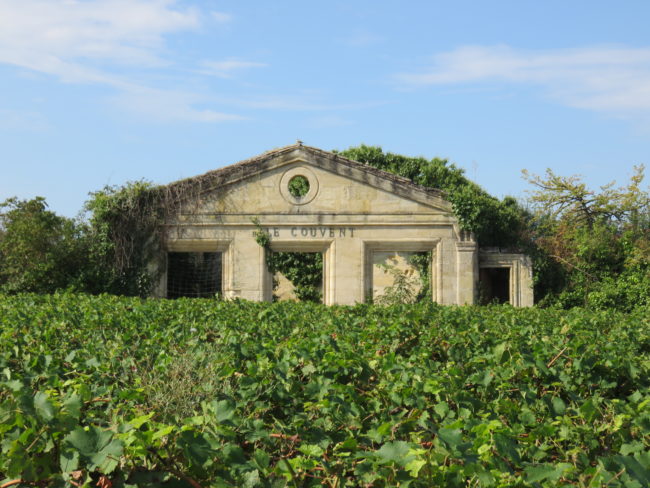
The Collegiate Church and Cloister
We walked along Rue des Écoles where we came upon a number of interesting art galleries and stores. Eventually we came to the catholic church Eglise Collégiale. Just across from the entrance is a piece of the old city wall. The church was built between the 12th and 15th centuries and is where the Augustine canons resided until the French Revolution. We walked inside the church and then passed through an entrance on the side which led to the most beautiful cloister in Romanesque and Gothic styles. At the centre are tombs, relics and medieval paintings.
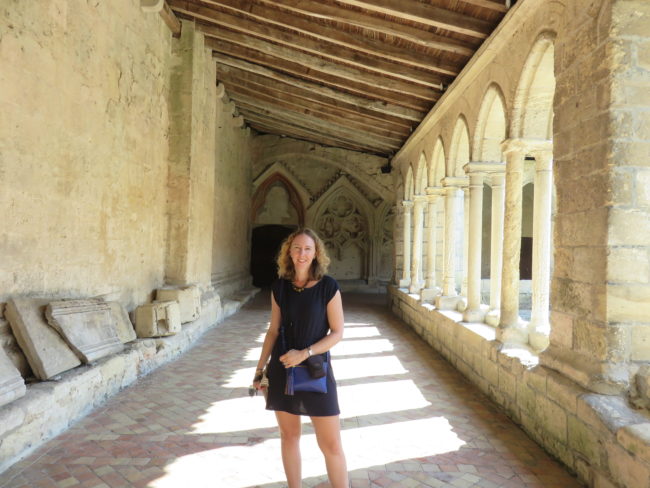


Monolithic Church and Bell Tower
As we were near the Tourist Office, we stopped in to see if we could book a tour of the Monolithic Church, as you can only visit on a tour. Unfortunately the English tours were booked out, but we were able to book into a French tour and they provided us a leaflet in English detailing the information shared on the tour. There was some time to kill before we started our tour, so we picked up the keys to visit the Bell Tower. They don’t have anyone manning the Bell Tower, so you need to collect the keys from the tourist office and you will need to leave behind some ID as a deposit. They gave us a laminated card which provided an overview of the Bell Towers history and on the back it provided an outline of what buildings and sites we could see from the top. I’ve included photos of this below for those that are interested.

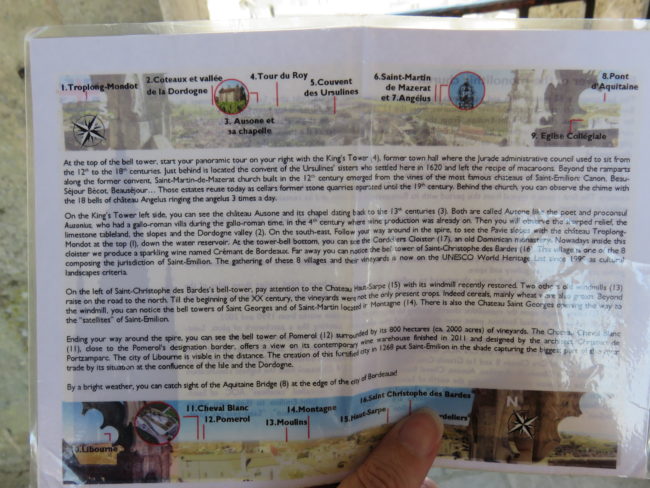
The entrance to the Bell Tower was a short walk from the Tourist Office on Place du Clocher. We felt like we had keys to the city! Beside the entrance to the Bell Tower is a viewing point with breathtaking views over the village. However, if you can get keys to the Bell Tower, you will get even better views, because the Bell Tower is St-Émilion’s highest point. There are 196 steps to surmount, but the views at the top overlooking the village and the surrounding vineyards made it all worth it.
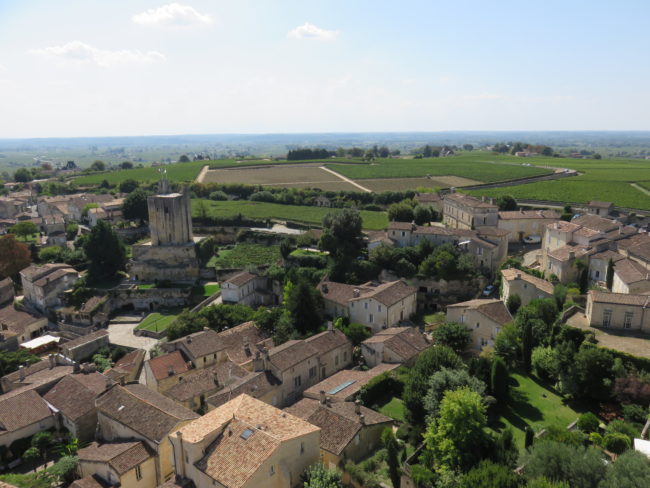
Our tour of the monolithic church was interesting, despite not being able to understand what the tour guide was saying! You can avoid this by contacting the tourist office in advance to book your place on an English tour. The tour took about 30-45 minutes and unfortunately we were not allowed to take any photos which was disappointing. Hence I’ve only included photos of the outside which sits facing the old market square. We were taken in to see the cave that the monk called Emilion (or Aemilianus) spent 17 years of his life between the years 750 and 767. Before coming to this village, Emilion lived in Brittany and worked for the Earl of Vannes. Sometimes he would go into the castle kitchen and hide bread under his coat to give to the poor. One day his master caught him and asked him what he was hiding. Emilion lied to save his life and said it was only wood. As he opened his coat, a miracle occurred, the bread had turned into wood. When people heard of this miracle, it made Emilion popular, but this caused him to flee. He spent time in a monastery where he became a monk, and then made his way to what is now known as Saint-Émilion, where he founded the village with some disciples.
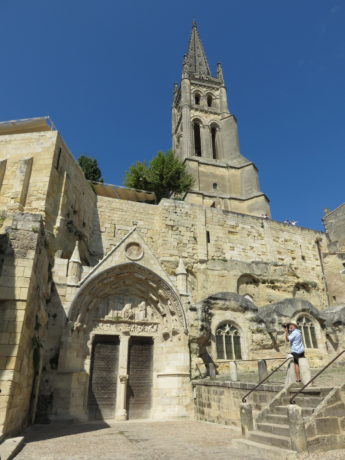
We next moved on to the Trinity Chapel. It was built at the beginning of the 13th century, but much of what you see today is a result of the changes made to it in 1730. During the French Revolution when the Church’s belongings were seized, it was converted into a grocery, then later oak barrels were made here. The soot from the smoke they produced covered the 14th century paintings, which actually acted as a protective coating and preserved them.
We then visited the catacombs. The cupola (a rounded dome forming a roof) above it had windows so that people could look down at the holy relics. Three classes or people could be buried here which included important members of the Church, rich men, and still born babies, as they were considered too young to have committed any sins. The second part of the catacombs included a gallery dating back to the 8th century. You can see off into the distance that this is a huge area down here, but the tour only takes you to a very small part of it. Apparently there are 200 km of underground quarries that spread under the village and its vineyards, some of which are now used to store wine.
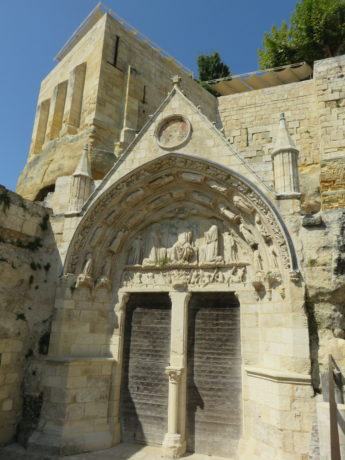
The final and most magnificent site was the Monolithic Church. It was vast, much bigger than I was expecting. It has huge pillars which have been reinforced over time, as they are weakened by underground springs and rivers. It is hard to imagine that this place was once adorned with paintings and drapery and sculptures. Like the other churches in St-Émilion, it was abandoned during the French Revolution. Near the exit were four alters dating from the 15th to the 18th centuries.
The Cordeliers’ Cloister
For lunch we headed to Les Cordeliers, a vineyard located on the grounds of a historic Franciscan settlement. The Franciscan’s are known as the Cordeliers in France because of the rope they used as a belt. They arrived in St-Émilion in the 13th century and founded their second convent within the city walls during the 14th century. It included a church, cloister, garden, winery, and cellar. Following their eviction during the French Revolution, the property fell into disrepair, but today the ruins are now the stunning location where tourists can visit and enjoy a glass of wine amongst the old remaining arches of the cloister and the gardens.
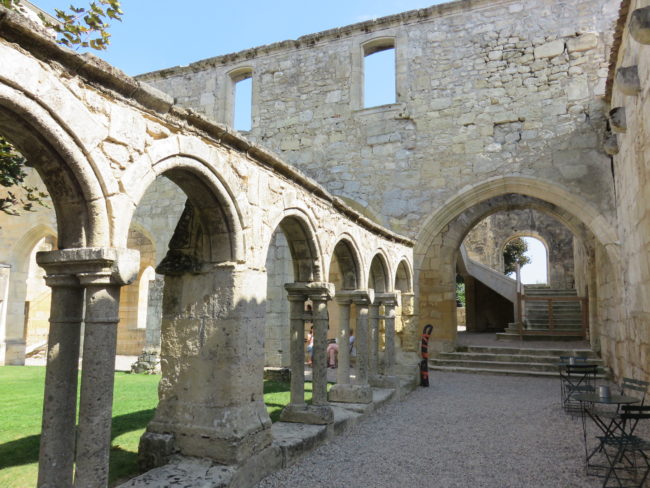
When we arrived, we had a look through the small gift store, then headed outside to their wine bar that serves sparkling wine by the glass or bottle. We created ourselves a picnic basket from their menu of items such as paté, fresh tomatoes, cheese, sausage, and baguette. The staff placed our items into a little wooden basket which we carried, along with our bubbles, to the picnic tables. You can either sit in the garden or in within the ruins of the cloister. We chose the cloister as the stone walls provided us shade from the hot sun, and I just loved the idea of sitting amongst an area of such rich history.
Sparkling wine is rather a rarity in this area, but apparently they started making it when they had poor sales in the late 19th century. We absolutely loved it and as we left we returned to the gift store to buy ourselves some bottles to take home with us. Entry to the cloister and gardens is free, but you can also pay to go on one of their tours which run from April to October and includes their underground caves.
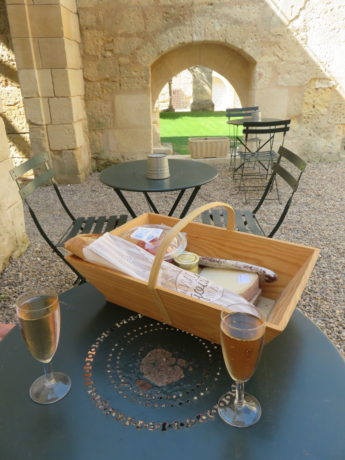
Cadene’s House and Gate
Not far from Les Cordeliers is Cadene’s House and Gate on Rue de la Cadene. This building is the only remaining timber house in the village and features an old arch that was once an inside gate of the city. It’s facade dates from the 16th century, but its foundations were built earlier than that.
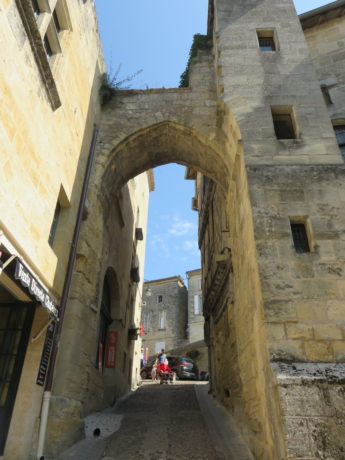

Steep Streets or ‘Tertres’
The maze of steep cobblestone streets that run through the village of St-Émilion makes you feel like you have stepped back in time. It is utterly charming, but I would hate to try and clamber up here in winter when its icy.

The Market Hall
After stopping off to grab an ice cream to cool us down (it gets very hot in the village during summer), we stopped to get some shelter in the shade of the ancient covered market. It opens up onto the former market square, which is now a bustling outside seating area for the tourist restaurants. The upstairs apparently hosted the city hall from the 18th century.

The Great Wall
The Grandes Murailles or Great Wall sits on the roundabout and corner of the D243 and Avenue de Verdun. Its a remnant of an impressive Dominican convent built in the 13th century which sat just outside the city walls. Unfortunately it was destroyed at the beginning of the Hundred Years War because it was located so near to the ramparts (the city’s defensive wall). They feared that if it had been captured it would have been a strategic point over the town. The Dominicans ended up relocating to within the city walls.
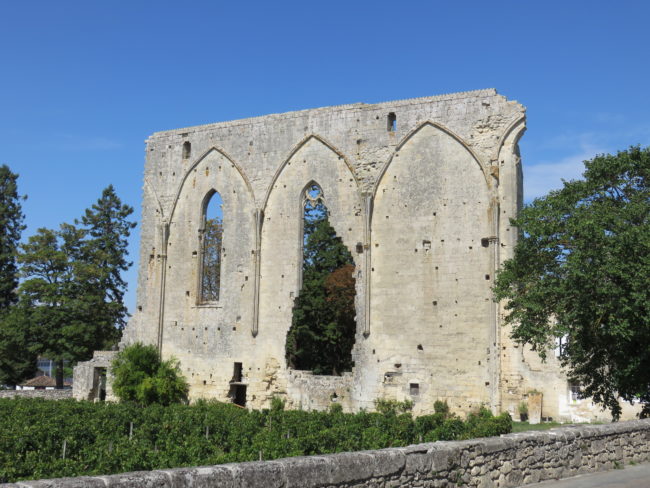
Cardinal Palace
Across from the Great Wall is the remains of what would have been a magnificent late 12th century dwelling called Palais Cardinal or Cardinal Palace. It is located next to the towns former main entrance called the Bourgeoise Gate. There is a nice park path which runs alongside it and provides a good spot for views of it.
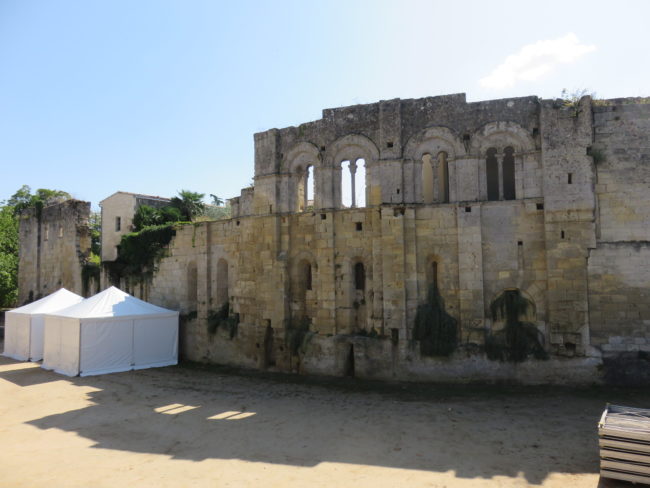
Brunet Gate and the Ramparts
Our final historic site of the day was Brunet Gate and the ramparts, or Porte Brunet et les remparts. To get to it, I suggest walking down Chemin des Fossés from the Cardinal Palace because this provides an opportunity to see the remains of the old city wall on one side of you with the beautiful grapevines on the other. There isn’t much of a path, but it is a reasonably quiet road with grass verge.
In the 12th and 13th centuries, St-Émilion was enclosed by an impressive system of ramparts – defensive walls. On the towns eastern side is the towns (almost) unaltered Brunet Gate. This spot also provides a lovely viewing point of the grapevines surrounding St-Émilion.
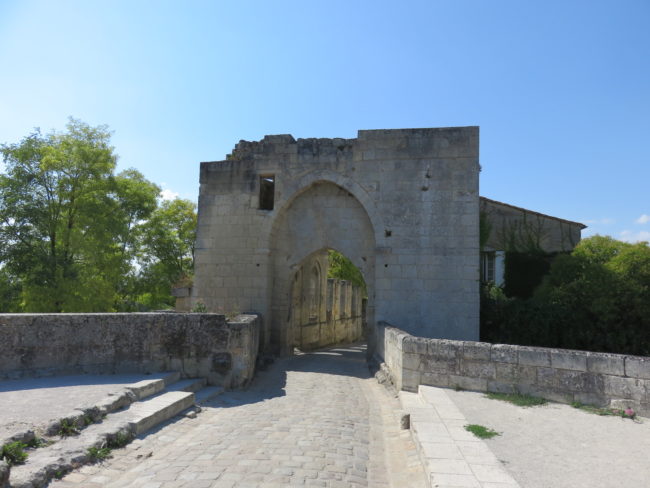
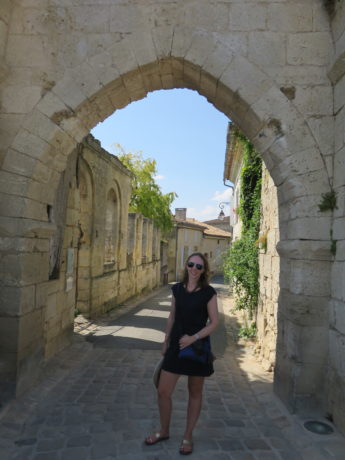
Accommodation Options in Saint-Émilion
Search available accommodation in Saint-Émilion
Budget
Moderate
Luxury
Practical Tips for Visiting Saint-Émilion
-
- How long should I visit St-Émilion for? Personally, I think you need to allocate an entire day to get around to all of the sights and attractions. However, if you want to spend some time visiting vineyards as well, then you will need to allocate a couple of days here.
- Getting to St-Émilion
- By Car: The D670 is the main highway running past St-Émilion, but you can also take the more scenic D243. There is parking available in several locations around the perimeter of the village.
- By Train: The local trains from Bordeaux to St-Émilion leave from Gare St. Jean. The train we were on also stopped at Cenon which may be closer for you, but do check the timetable to see if it will stop at that station. It’s a 35 minute train trip. You can also get the train to the nearby town of Libourne and get a bus to St-Émilion from there. You can purchase the train tickets from the ticket office or ticket machines at the train station, or online using the Trainline website. The train station building in St-Émilion is permanently closed, so make sure you purchase your return ticket at Bordeaux or online.
- By Bus: In the summer months they also run a bus service a couple of times a day from Bordeaux. If you prefer to take the bus, then check with the tourist office to see if it is running.
- Please note: There is NO public transport on the 1st of May each year which is their Labour day.
- By Tour:
- If you are based in Bordeaux, then you can get to St-Émilion on a day tour from Bordeaux. The full day tour to St-Émilion includes a wine tour of some of the local vineyards. If you are short on time, then you can go on a half day tour instead, but I would really recommend a whole day if you can because there is a lot to see and do.
- If you are making your own way to St-Émilion, then you can join a Tuk Tuk tour. They offer a variety of tour options, including tours of the village and longer ones that also include visits to local vineyards and wine tasting.
- If you enjoy cycling, then there are cycling day tours that take you around some local vineyards. The cycling starts from St-Émilion but the tour includes transport from Bordeaux.
- Getting from St-Émilion train station to the village:
- Taxi/Tuk Tuk/Tourist Road Train: During the summer tourist months, a small road train collects the tourists from the train station and runs them up to the village. However, you can also get a Tuk Tuk (cheap) or taxi up to the village.
- Tourist Information Centre St-Émilion
- Place des Créneaux Le Doyenné, 33330 Saint-Émilion
- Best viewing spots in St-Émilion: There are three really great spots that are great for views and taking lots of photos.
- Behind The King’s Keep on Rue du Couvent.
- Beside the entrance to the Bell Tower on Place du Clocher
- On Brunet Gate – this one provides a nice view of the surrounding grapevines.
- Eating and drinking out in France: Due to the different licensing in France, some café’s and restaurants are only licensed to sell alcohol with food, so in order to drink you must also order food. Bars have a different license that allows them to sell drinks without food. From my experience, establishments do try to make this clear to tourists, but it does end up causing confusion for some.
- Language: French. Although a lot of English speaking tourists visit Toulouse, we found quite a lot of people did not speak English, so do try to have your French translation app at hand. Here are a few French words to get you started:
- Yes = oui (wee)
- No = non (no)
- Please = sil vous plait (seal voo play)
- Thank you = merci (mare-see)
- Hello = bonjour (boh(n)-zhoor)
- Good evening = bonsoir (boh(n) swarh)
- Currency: Euro
- Tipping: The service charge is included in the bill, so there is no need to tip.
- Electricity: The electrical current is 220-240 volts, 50-60 Hz. Wall outlets take the European two round prong plugs. However, you are better off purchasing a worldwide adaptor that can be used in France as well other countries. At least then you can potentially get some further use out of it on future vacations. If you’re taking a number of electronics with you, then I would recommend purchasing a couple of these adaptors.
- Navigating: Use Google’s free Offline Maps. Google Offline Maps allows you to access free maps for navigating that can be used offline i.e. you don’t need WIFI, data, or roaming to be able to use them. Follow this detailed guide on how to use Googles Offline Maps. Using your phone as a GPS will drain your battery quickly, so use a portable battery charger which you can use to charge your phone and any other USB chargeable devices. For a tourist map of St-Émilion that highlights all of these sites and attractions, head to the Saint-Émilion Tourist Information Centre.

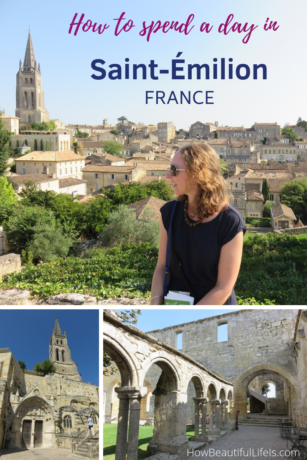


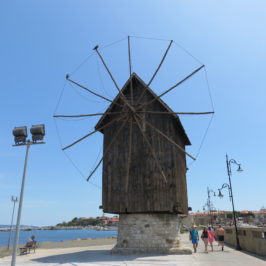
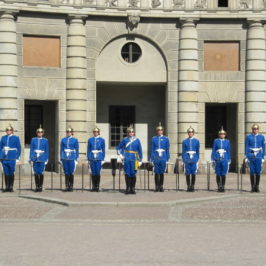
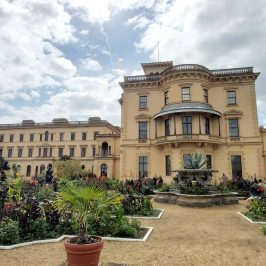
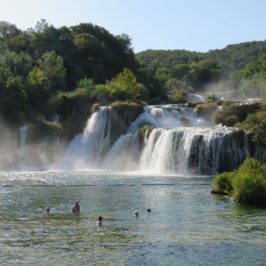

Leave a Reply